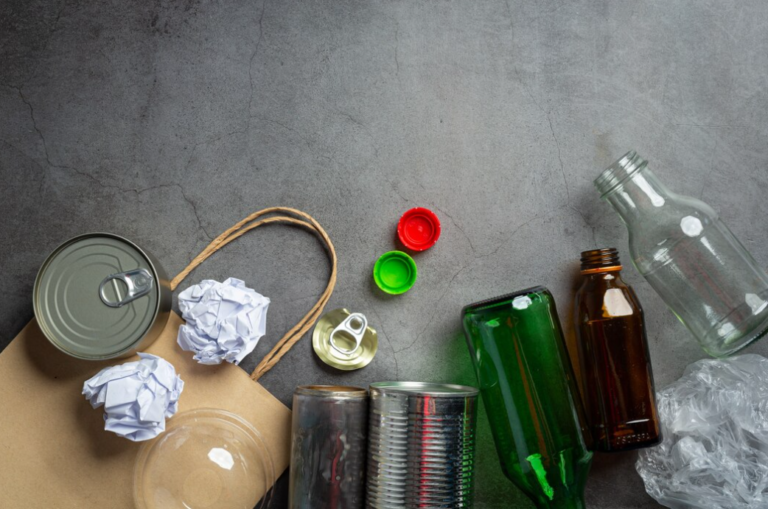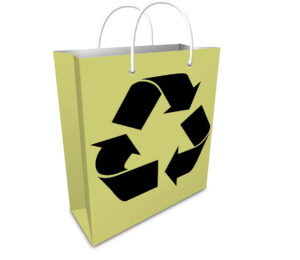In today’s age of heightened environmental awareness, the importance of recycling has never been clearer. But have you ever stopped to wonder why recycling or recovery machines play such a pivotal role in the process? It’s more than just crunching cans and smashing bottles. In the heart of every recycling center, there’s a powerhouse of engineering – the recovery machine.
The Essence of Recycling
Recycling isn’t just about reducing waste. It’s a cyclical process that ensures resources are reused, giving materials multiple lives. Imagine throwing away a gold necklace. Seems wasteful, right? That’s how we should view all materials.
What’s in a Recovery Machine?
Components and Their Functions
- Conveyor Belts: Acting like the circulatory system, these belts move materials efficiently;
- Shredders: Crushing and tearing materials, preparing them for the next step;
- Magnetic Separators: Like a magnet to your refrigerator, they pull out metals;
- Air Classifiers: Using gusts of air, they separate light and heavy materials;
- Screens: These act as filters, allowing only certain sized particles through.
The Importance of Design
Have you ever tried using a Swiss Army knife? Just as it has multiple tools for different functions, recovery machines are designed to tackle various materials, from plastics to metals.
Benefits of Using Recovery Machines
Economic Boost
For every ton of waste recycled, numerous job opportunities emerge, invigorating the local economy. Think of it as turning trash into treasure – quite literally!
Conservation of Resources
Remember the gold necklace analogy? Now, picture recycling as a treasure hunt, where every piece of waste can be transformed back into a valuable resource.
Energy Savings
Here’s a fun fact: Recycling aluminum saves 95% of the energy required to produce the same amount from raw materials. Talk about efficiency!
Reduction in Landfills
By diverting waste from landfills, we’re not only conserving space but also reducing greenhouse gas emissions.
Challenges Faced by Recovery Machines
Recovery machines, like all devices, have their hurdles. One primary concern is the contamination of recyclables. Just like how one rotten apple can spoil the bunch, a single non-recyclable item can disrupt the process.
The Future of Recycling and Recovery
With advancements in AI and robotics, the future looks promising. Imagine a machine that can sort recyclables with the precision of a human but at lightning speed. We’re on the brink of a recycling revolution!
Misconceptions Surrounding Recycling
The Myth of Crushing Cans
One of the most prevalent misconceptions about recycling is the idea surrounding crushed cans. Many people ask, “why can’t you crush cans for recycling?” The answer isn’t straightforward, but here’s a breakdown:
- Sensor Limitations: Modern recovery machines use sensors to detect and sort recyclables by size and material. Crushing cans can sometimes alter their recognizable size and shape, leading to potential sorting issues;
- Safety Concerns: Crushed cans can have sharp, jagged edges which pose a safety hazard to workers in recycling facilities;
- Processing Efficiency: Some facilities prefer cans in their original shape for more efficient processing. A crushed can might complicate the process, leading to increased energy and time consumption.

Steps to Optimize Recycling At Home
Getting the most out of recycling isn’t limited to understanding recovery machines. We can all do our part by ensuring we recycle correctly at home. Here’s a simple guide:
- Rinse Your Recyclables: Residue can contaminate the recycling stream. Ensure your recyclables are clean;
- Don’t Bag Recyclables: Plastic bags can jam machinery. Instead, place items directly in the bin;
- Check Local Guidelines: Not all materials are recyclable everywhere. Ensure you’re familiar with local guidelines;
- Avoid Crushing Cans: As mentioned, there are reasons why you can’t crush cans for recycling. It’s best to keep them in their original shape;
- Store Recyclables Properly: Keep recyclables in a dry, cool place to prevent contamination and degradation.
Impact of Recycling on the Environment
To truly grasp the importance of recycling and recovery machines, one must understand its broader impact on the environment. Here’s a comparison table to help visualize the benefits:
| Aspect | With Recycling | Without Recycling |
|---|---|---|
| Energy Consumption | Reduced by up to 95% for materials like aluminum. | High energy usage for virgin materials. |
| Greenhouse Emissions | Significantly reduced, promoting cleaner air. | Increased emissions, leading to pollution. |
| Natural Resources | Conserved, leading to sustainable resource management. | Rapid depletion and environmental strain. |
| Land Use | Less dependency on landfills, preserving natural habitats. | Increased landfills, harming ecosystems. |
Recycling doesn’t just convert waste into reusable material; it’s a tool that massively reduces our ecological footprint. As the table suggests, the more we recycle, the more we contribute to a healthier planet.
The Evolution of Recovery Machines
From Manual to Mechanical
There’s a rich history behind the machines that stand as monoliths in recycling centers today. Early recycling processes were heavily manual. Workers would stand on assembly lines, sorting through waste with their bare hands, categorizing them into various bins. As the demand for recycled materials grew, the need for automation became evident. Enter the era of recovery machines, initially rudimentary contraptions, but with time, they evolved into the technologically advanced marvels we see today.
Integration of Technology
The last few decades have been transformative for the recycling industry. With advancements in sensor technology, recovery machines have become smarter. They can now distinguish materials not just by size but also by composition. For instance, infrared sensors can identify different types of plastics, ensuring they’re sent to the correct processing stream. Such integrations have significantly increased the efficiency and accuracy of recycling processes.
The Road Ahead: Anticipated Developments
With the pace of technological innovation showing no signs of slowing down, what might the future hold for recovery machines? There’s a lot of buzz around integrating artificial intelligence. These machines could potentially learn and adapt to new types of waste, making real-time decisions about sorting and processing. Additionally, the integration of robotics might further reduce the need for manual intervention, ensuring even more precise and efficient recycling processes.
The Environmental Economics of Recycling
Cost versus Benefit
When discussing recycling, it’s easy to get caught up in the environmental benefits and overlook the economic implications. But they’re deeply intertwined. Recycling might come with operational costs, but the long-term economic benefits far outweigh the initial investments. By converting waste into reusable materials, we’re not just saving the environment but also creating an industry worth billions, providing jobs, and promoting sustainable business practices.
The Hidden Costs of Not Recycling
On the flip side, the economic ramifications of not recycling are staggering. Think about the expenses related to landfill maintenance, the medical costs due to health issues stemming from pollution, and the loss of valuable resources. When you factor in these hidden costs, it becomes clear that recycling isn’t just an environmental need but an economic one.
A Sustainable Economic Model
With the global shift towards sustainable living, businesses are also recognizing the value of “green” practices. Recycling plays a pivotal role in this. Companies that adopt and promote recycling aren’t just seen as environmentally conscious but also forward-thinking and innovative. In the long run, this can translate to increased customer trust and loyalty, further reinforcing the intertwined relationship between environmental and economic sustainability.

The Global Perspective on Recycling
Varied Approaches Across Borders
Recycling isn’t a one-size-fits-all approach. Different countries have adopted practices best suited to their circumstances, resources, and cultural beliefs. For instance, Sweden’s aggressive recycling policies have led to such efficiency that they import waste to keep their recycling plants running. In contrast, countries like the U.S. are still grappling with widespread standardization of recycling practices.
Learning from the Leaders
Countries leading the recycling race offer valuable insights. They’ve showcased the benefits of stringent policies, public awareness campaigns, and technological investments. For nations lagging in their recycling efforts, understanding and adapting strategies from the leaders can provide a blueprint for success.
The Need for Global Collaboration
Recycling isn’t just a national concern but a global one. With the planet facing unprecedented environmental challenges, it’s crucial for nations to collaborate, share insights, and work collectively. A global unified approach towards recycling can accelerate the shift towards a sustainable future, where recovery machines play a critical role, and recycling practices are not just encouraged but are a way of life.
Conclusion
In the grand tapestry of recycling, recovery machines serve as the unsung heroes. They’re the heartbeats in a system that’s paving the way for a sustainable future. And as we continue to innovate and refine these machines, we edge closer to a world where waste is just a word in the dictionary.
FAQs
It’s designed to sort, separate, and prepare recyclables for reuse.
Recycling creates job opportunities and promotes the efficient use of resources, boosting the economy.
Contaminated recyclables can disrupt the process and reduce the quality of recycled materials.
They efficiently sort and prepare waste for recycling, diverting tons from ending up in landfills.
With tech advancements, future machines might be faster, more precise, and even AI-driven.









+ There are no comments
Add yours